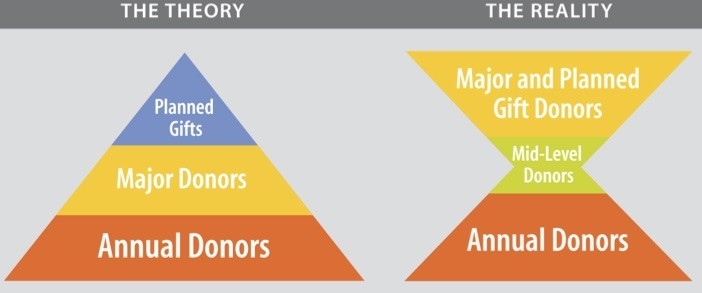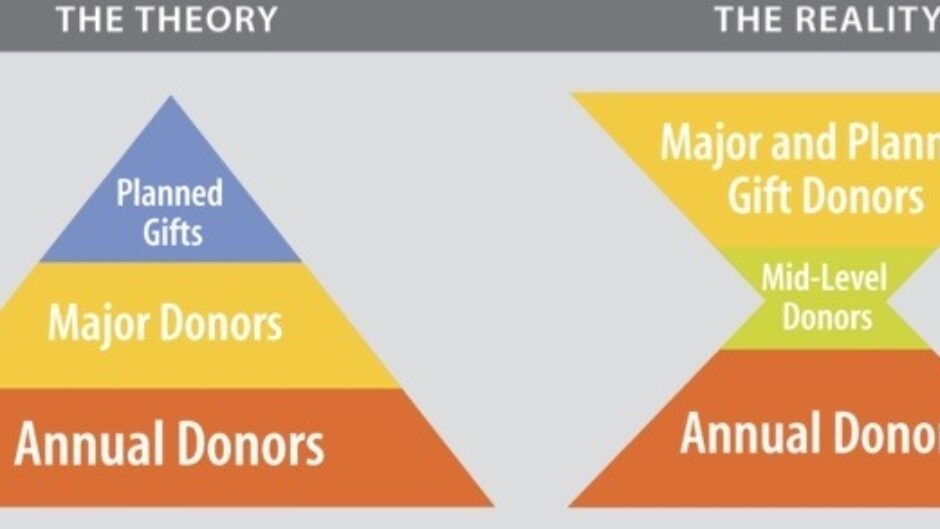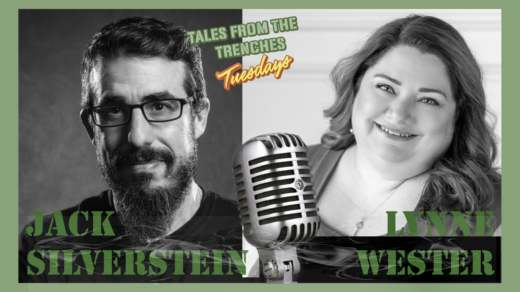
One of my first blogs was a ten-part Fundraising Mythbuster series. There, I wrote about the myth-conception that most money comes from Special Events. For that particular post, I addressed the concept of Annual Fund donors. I dug a little deeper and wrote that we are paying a lot of attention to the top end of the donor pyramid and the bottom base but neglecting the Midsection. We are essentially squeezing them out.
New Donors
Most organizations have a welcome package for new donors. (If you don’t, you should!) It contains remarkable facts about your organization, perhaps a quick impact report, and ways for the donor to become engaged further. This is all good stuff. Fundraisers track the number of new donors to the organization as it is one of the many metrics utilized to determine an organization’s long-term fundraising health. If you don’t have new donors coming to your organization, your donor pool will one day run dry.
Major Donors
Most successful fundraising shops spend the majority of their time in this area. A wise person once told me to “work smarter, not harder.” A single gift of $100,000 brings in the same revenue as 1,000 gifts of $100. Charities say that the pinnacle of giving is the Planned Gift (I really despise this term), taking the form of a bequest. But, the Deferred Gift Donor (see how I changed the name?) is more likely to come from your mid-level donor pool than your Major Donor pool.
Squeezing The Midsection
As fundraisers, we do a pretty good job of appreciating new donors. And, we likely do a great job at thanking and stewarding the Major Donors. Most shops fall short with the Midsection — the donors that give modest gifts year in and year out. Far too often, we take these people for granted, essentially squeezing out their sense of belonging. The donors will likely move to a different organization that will give them the focus and attention they are craving. We spend a lot of time trying to garner new donors or raise the sights of our existing Major Donors, but we do not give the Midsection the attention it so rightly deserves.
Studies have shown that those in the Midsection represent 1% of the donors yet account for one-third of the revenue. Often these donors don’t necessarily respond to Direct Mail and are not in the bespoke Major Donor Pool. So, ultimately, they are inadvertently ignored. And that is one of the worst things that can happen to a donor. We alienate these folks unwittingly.
From a management perspective, this is the most complex group to advocate resources for. Everyone understands that acquiring donors is a relatively costly exercise, but one needs to replenish donors. Furthermore, boards and bosses understand the Major Donor’s activities and support. It is far too easy not to invest in Midsection donors. Some will never leave the Midsection, while others will take a long while to move “up” the pyramid.
The Future
Midsection donors are likely some of the best prospects an organization has for Deferred Giving and/or the Major Gift pipeline. It is often a challenge to budget resources to solicit this group of donors. What I would suggest is to think of them like Major Donors and have them segmented. After all, it is only 1% of your donor pool. That way, you can have your Midsection Donors, Major Donors, and Leadership Donors. It is all a matter of putting the proper priority towards this cohort.
I was recently chatting with a religious institution, and they are midway through a capital campaign. (Midway financially — they have been slogging the campaign for five years!) They have uncovered some extraordinary gifts from parishioners. Nobody had ever taken the time and effort to approach them individually. Their actions are quite literally paying off.
Conclusion
Your Midsection of donors isn’t comparable to squeezing a roll of Charmin paper towel. They don’t like being squeezed. Instead, give it the attention that this cohort deserves, and I promise it will be a wise investment for your organization.
Until next week.
L’chaim,
jack




